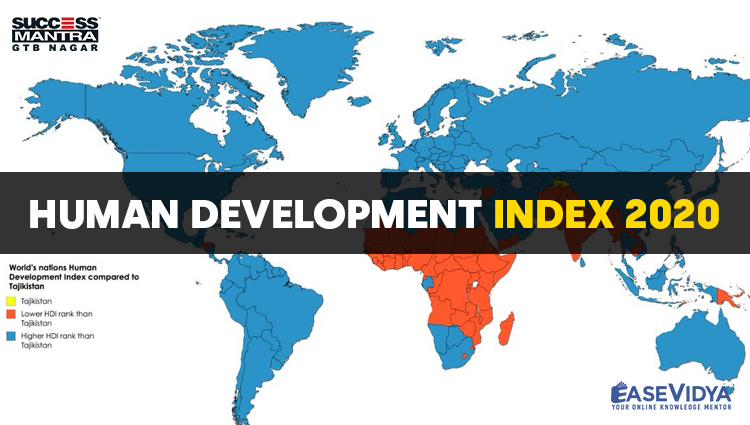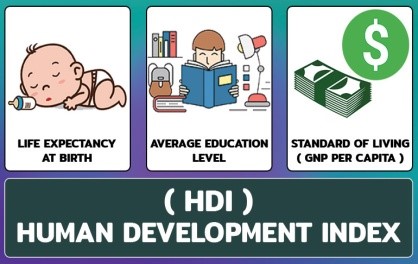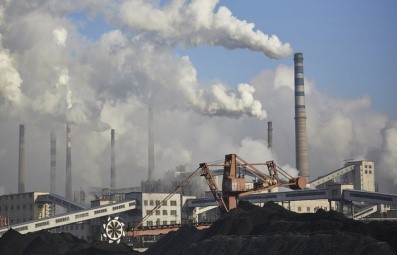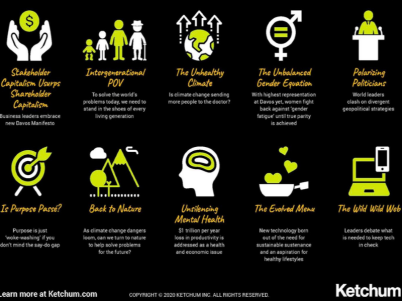
HUMAN DEVELOPMENT INDEX 2020
HUMAN DEVELOPMENT INDEX 2020
According to the report released by UNDP- United Nations Development Programme, India has been ranked at 131 among 189 countries in Human Development Index 2020. The index is a measure of a nation’s health, standards of living, and education. The 2020 Report has introduced planetary pressures-adjusted Human Development Index, which adjusts the standard Human Development Index (HDI) by a country’s per capita carbon dioxide emissions and material footprint.
The other indices that form the part of the Report are:
• Inequality-adjusted Human Development Index (IHDI),
• Gender Development Index (GDI),
• Gender Inequality Index (GII) and
• Multidimensional Poverty Index (MPI).
HDI emphasizes that people and their capabilities should be the ultimate criteria for assessing the development of a country, not economic growth alone. The Index is based on three Basic Dimensions of Human Development: A long and healthy life, Access to knowledge, and A decent standard of living.
TOP PERFORMERS OF THE INDEX
Norway topped the index, followed by Ireland and Switzerland. Hong Kong and Iceland complete the top five.
Performance of the Asian Region: Singapore was ranked 11, Saudi Arabia 40, and Malaysia was at 62 in the global index, representing the top bracket among the Asian countries with “very high human development". Sri Lanka (72), Thailand (79), China (85) and Indonesia and Philippines (both 107), and Vietnam (117), among others, were “high human development" countries. India, Bhutan, Bangladesh, Myanmar, Nepal, Cambodia, Kenya and Pakistan were ranked among countries with “medium human development" with ranks between 120 and 156.
INDIA'S PERFORMANCE IN THE INDEX

• The Human Development Index value of India for 2019 was 0.645 which put the country in the medium human development category. India has ranked 131 out of 189 countries while it ranked 130 in 2018 in the development index. Shoko Noda, the UNDP Resident Representative, stated that the drop in India’s ranking from 130 to 131 doesn’t mean that India didn’t do well, it means that other countries did better. He added that India can also help other countries too and appreciated its commitment to reduce carbon emissions. Between 1990 and 2019, India’s HDI value increased from 0.429 to 0.645, an increase of 50.3%.
• Long and Healthy Life: Life expectancy for Indian’s at birth was 69.7 years in 2019, slightly lower than the south Asian average of 69.9 years. Between 1990 and 2019, India’s life expectancy at birth increased by 11.8 years.
• Access to Knowledge: The expected years of schooling in India was 12.2 years, compared with 11.2 years in Bangladesh and 8.3 years in Pakistan. Between 1990 and 2019, mean years of schooling increased by 3.5 years, and expected years of schooling increased by 4.5 years.
• A Decent Standard of Living: In terms of Gross National Income (GNI) per capita, India at USD 6,681 fared better than some others in 2019, despite a fall over the previous year. India’s GNI per capita increased by about 273.9% between 1990 and 2019.
PLANETARY PRESSURES-ADJUSTED HDI

• The PHDI adjusts the standard HDI by a country’s level of carbon dioxide emissions and material footprint, each on a per capita basis.
• Performance of the Countries: Norway, which tops the HDI, falls 15 places if this metric is used, leaving Ireland at the top of the table. The United States (HDI Rank -17) and Canada (HDI Rank -16) would fall 45 and 40 places respectively, reflecting their disproportionate impact on natural resources. The oil and gas-rich Gulf States also fell steeply. China would drop 16 places from its current ranking of 85.
• India’s Performance: India would move up eight places in the ranking. Under the Paris Agreement, India pledged to reduce the emission intensity of its GDP from the 2005 level by 33-35% by 2030 and to obtain 40% of electric power capacity from non-fossil fuel sources by 2030. Solar capacity in India increased from 2.6 gigawatts in March 2014 to 30 gigawatts in July 2019, achieving its target of 20 gigawatts four years ahead of schedule. In 2019, India ranked fifth for installed solar capacity. The National Solar Mission aims to promote solar energy for power generation and other uses to make solar energy competitive with fossil fuel-based options.
OTHER INDICES RELATED TO IT
Inequality-adjusted Human Development Index: The IHDI indicates percentage loss in HDI due to inequality. For India, IHDI value for 2019 is 0.537 (16.8% overall loss).
Gender Development Index: GDI measures disparities on the HDI by gender. For India, GDI value for 2019 is 0.820 (World: 0.943).
Gender Inequality Index: GII presents a composite measure of gender inequality using three dimensions: Reproductive health, Empowerment and The labour market. In GII, India is at 123rd rank. Last year, it was ranked 122nd out of 162 countries.
Multidimensional Poverty Index: MPI captures the multiple deprivations that people in developing countries face in their health, education and standard of living. The most recent survey data publicly available for India’s MPI estimation refer to 2015-2016. In India, 27.9% of the population (3,77,492 thousand people) are multidimensionally poor, while an additional 19.3% are classified under vulnerable to multidimensional poverty (2,60,596 thousand people).
OTHER IMPORTANT FINDINGS OF THE REPORT

• The devastating effects of Covid-19 have taken the world’s attention, other layered crises, from climate change to rising inequalities, continue to take their toll. The challenges of planetary and societal imbalance are intertwined: they interact in a vicious circle, each making the other worse.
• Challenges Related to Children: Indigenous children in Cambodia, India and Thailand show more malnutrition-related issues such as stunting and wasting. In India, different responses in parent behaviour as well as some disinvestment in girls’ health and education have led to higher malnutrition among girls than among boys as a consequence of shocks likely linked to climate change.
• Displacements in 2020: Disasters continued to trigger most new displacements in 2020. Cyclone Amphan hit Bangladesh and India, driving the largest single displacement event in the first half of the year, triggering 3.3 million pre-emptive evacuations.
• Expanding human development - more education of women and girls, more economic empowerment of women, more bargaining power of young girls in households, reduced poverty, etc. Evidence from Colombia to India indicates that financial security and ownership of land improve women’s security and reduce the risk of gender-based violence, clearly indicating that owning land can empower women.
QUESTIONS (1-5)
Q.1 The Human Development Index 2020 which is a measure of a nation’s health, standards of living, and education is released by which of the following organization?
A. United Nations Development Programme: ANSWER
B. United Nations Conference on Trade and Development
C. United Nations Educational, Scientific and Cultural Organization
D. United Nations Environment Programme
Q.2 What has been the India's rank in recently released Human Development Index calculated among 189 countries?
A. 122
B. 117
C. 131: ANSWER
D. 108
Q.3 Which of the following is not one of the other indices that form the part of the Report?
A. Inequality-adjusted Human Development Index (IHDI)
B. Human Capital Index: ANSWER
C. Gender Development Index (GDI)
D. Gender Inequality Index (GII)
Q.4 Which of the following statements is/are correct regarding the findings of the Index recently published?
A. Switzerland topped the Human Development Index
B. The Human Development Index value of India for 2019 was 0.645: ANSWER
C. There are two other indices that form the part of the Report
D. None of the above.
Q.5 From the following options, which of the countries is not in the list of top five?
A. Ireland
B. Norway
C. Canada: ANSWER
D. Switzerland.













rfswjttvnr
HUMAN DEVELOPMENT INDEX 2020 | Read Daily Article Editorials Only On Success Mantra Blog | Daily Article | Monthly Article | Weekly Article | Yearly Article | Most Requesting Articles | Legal Awareness Articles | Current Affairs | Passage Based Current Affairs | One Linear Current Affairs | Current Affairs For CLAT | Current Affairs For AILET | Current Affairs For Slat | Legal Aptitude Current Affairs | Law Current Affairs | Current Event | Current Affairs Pdf | Current Affairs Pdf In English | Current Affairs Pdf Free Download | Current Affairs MCQ | Current Affairs MCQS | Current Affairs Work Sheet | Current Affairs UPSC | Current Affairs BBA | Current Affairs BCA | Current Affairs BJMC | Current Affairs NCHMJEE | Daily Editorial | Monthly Editorial | Weekly Editorial | Yearly Editorial | Most Asking Editorials | Legal Awareness Editorials | Current Editorial | Passage Based Current Editorial | One Linear Current Editorial | Current Editorial For CLAT | Current Editorial For AILET | Current Editorial For Slat | Legal Aptitude Current Editorial | Law Current Editorial | Current Event | Current Editorial Pdf | Current Editorial Pdf In ENGLISH | Current Editorial Pdf Free Download | Current Editorial MCQ | Current Editorial MCQS | Current Editorial Work Sheet | Current Editorial UPSC | Current Editorial BBA | Current Editorial BCA | Current Editorial BJMC | Current Editorial NCHMJEE | Latest News In India | Latest News In Hindi | Latest News Delhi | Latest News Today India | Latest News Live | 3 Latest News | Latest News Today Delhi | Latest News Aajtak | News Articles India | News Articles For Students | News Articles 2020 | News Articles In English | News Articles In Hindi | News Article Example | Short News Articles | News Article Meaning | Success Mantra Delhi | CLAT Coaching In Delhi | Best CLAT Du LLB Institute In Delhi | Read Daily Article Editorials Only On Success Mantra Blog <a href="http://www.gpu4dym7v0812275fo973d6st98yo5mks.org/">arfswjttvnr</a> rfswjttvnr http://www.gpu4dym7v0812275fo973d6st98yo5mks.org/ [url=http://www.gpu4dym7v0812275fo973d6st98yo5mks.org/]urfswjttvnr[/url]
lxlqpevxe
HUMAN DEVELOPMENT INDEX 2020 | Read Daily Article Editorials Only On Success Mantra Blog | Daily Article | Monthly Article | Weekly Article | Yearly Article | Most Requesting Articles | Legal Awareness Articles | Current Affairs | Passage Based Current Affairs | One Linear Current Affairs | Current Affairs For CLAT | Current Affairs For AILET | Current Affairs For Slat | Legal Aptitude Current Affairs | Law Current Affairs | Current Event | Current Affairs Pdf | Current Affairs Pdf In English | Current Affairs Pdf Free Download | Current Affairs MCQ | Current Affairs MCQS | Current Affairs Work Sheet | Current Affairs UPSC | Current Affairs BBA | Current Affairs BCA | Current Affairs BJMC | Current Affairs NCHMJEE | Daily Editorial | Monthly Editorial | Weekly Editorial | Yearly Editorial | Most Asking Editorials | Legal Awareness Editorials | Current Editorial | Passage Based Current Editorial | One Linear Current Editorial | Current Editorial For CLAT | Current Editorial For AILET | Current Editorial For Slat | Legal Aptitude Current Editorial | Law Current Editorial | Current Event | Current Editorial Pdf | Current Editorial Pdf In ENGLISH | Current Editorial Pdf Free Download | Current Editorial MCQ | Current Editorial MCQS | Current Editorial Work Sheet | Current Editorial UPSC | Current Editorial BBA | Current Editorial BCA | Current Editorial BJMC | Current Editorial NCHMJEE | Latest News In India | Latest News In Hindi | Latest News Delhi | Latest News Today India | Latest News Live | 3 Latest News | Latest News Today Delhi | Latest News Aajtak | News Articles India | News Articles For Students | News Articles 2020 | News Articles In English | News Articles In Hindi | News Article Example | Short News Articles | News Article Meaning | Success Mantra Delhi | CLAT Coaching In Delhi | Best CLAT Du LLB Institute In Delhi | Read Daily Article Editorials Only On Success Mantra Blog lxlqpevxe http://www.g1s53whq2pz7v2g39v94doz73le445g4s.org/ [url=http://www.g1s53whq2pz7v2g39v94doz73le445g4s.org/]ulxlqpevxe[/url] <a href="http://www.g1s53whq2pz7v2g39v94doz73le445g4s.org/">alxlqpevxe</a>
kmtzxbxwy
Latest News on Education & LAW Exams Blogs | Success Mantra [url=http://www.gqw0gh6g4u3jc6db550ne4742q42kz71s.org/]ukmtzxbxwy[/url] kmtzxbxwy http://www.gqw0gh6g4u3jc6db550ne4742q42kz71s.org/ <a href="http://www.gqw0gh6g4u3jc6db550ne4742q42kz71s.org/">akmtzxbxwy</a>
ddbtnovwt
Latest News on Education & LAW Exams Blogs | Success Mantra ddbtnovwt http://www.geo8uvc548yyx3789n842a02t3o56agrs.org/ <a href="http://www.geo8uvc548yyx3789n842a02t3o56agrs.org/">addbtnovwt</a> [url=http://www.geo8uvc548yyx3789n842a02t3o56agrs.org/]uddbtnovwt[/url]
odyvzjhmm
Latest News on Education & LAW Exams Blogs | Success Mantra [url=http://www.g7659k0qia87oq92la14s24p2gp3edl5s.org/]uodyvzjhmm[/url] odyvzjhmm http://www.g7659k0qia87oq92la14s24p2gp3edl5s.org/ <a href="http://www.g7659k0qia87oq92la14s24p2gp3edl5s.org/">aodyvzjhmm</a>
gneywqeeqy
Latest News on Education & LAW Exams Blogs | Success Mantra [url=http://www.gqt2ch5m99q120426katdb698l996pfts.org/]ugneywqeeqy[/url] <a href="http://www.gqt2ch5m99q120426katdb698l996pfts.org/">agneywqeeqy</a> gneywqeeqy http://www.gqt2ch5m99q120426katdb698l996pfts.org/
xolzhjcxwf
Latest News on Education & LAW Exams Blogs | Success Mantra <a href="http://www.g7wp796xn8f8vy4v4p827q0gri758pi1s.org/">axolzhjcxwf</a> [url=http://www.g7wp796xn8f8vy4v4p827q0gri758pi1s.org/]uxolzhjcxwf[/url] xolzhjcxwf http://www.g7wp796xn8f8vy4v4p827q0gri758pi1s.org/